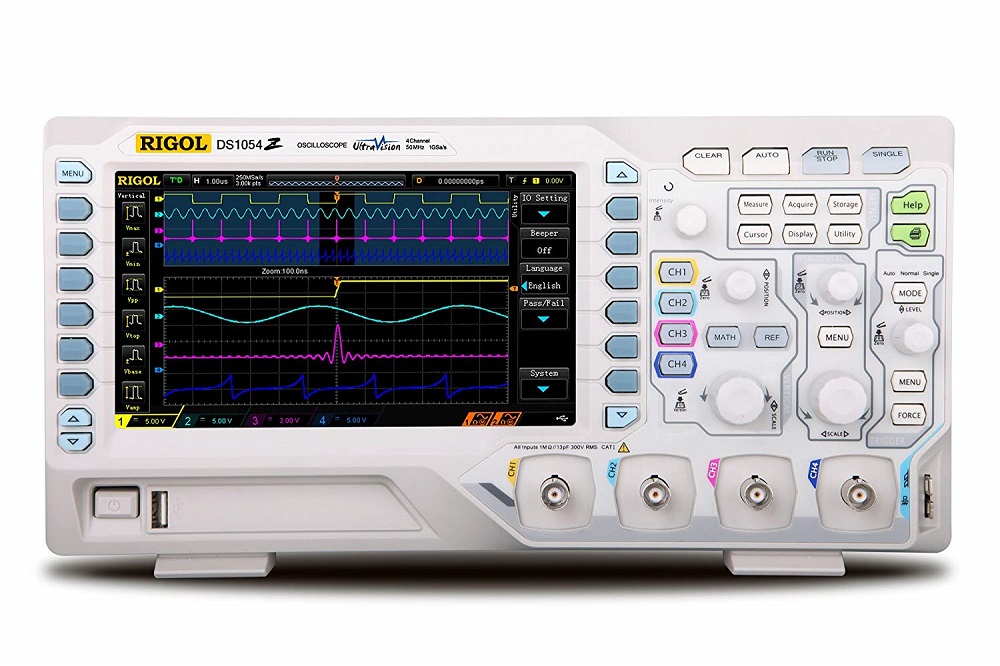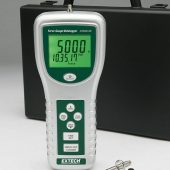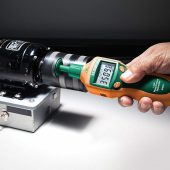The differences between an oscilloscope and a digital multimeter come down to pictures vs. numbers.
An oscilloscope measures change in voltage over time and displays it as a waveform on the screen. It’s sort of a picture of how an electrical signal is changing.
A multimeter measures voltage, current, resistance and other parameters. It displays the results as a number.
Depth and Range of Information
Both an oscilloscope and a digital multimeter do the same thing in that they give you useful information about a circuit or power source. It can be a battery, an outlet, a switch, live wires or a motherboard.
But the range and depth of information provided by each tool varies.
Let’s start with a multimeter.
A digital multimeter gives you precise values of various electrical parameters including voltage, current, and resistance.
The biggest advantage of a digital multimeter is that you can measure multiple parameters without switching among different tools. You simply turn the dial to the parameter you are measuring and you are good to go.
On the downside, a multimeter doesn’t tell you much else beyond the precise value of voltage, current or resistance.
If you want depth of information, an oscilloscope is the best choice.
An oscilloscope analyses an electrical signal and plots how the voltage varies over time. The waveform displayed on a digital oscilloscope’s screen is extremely informative.
You can measure frequency, max and min voltages, amplitude and other parameters.
In other words, an oscilloscope tells you so much more about the voltage from a circuit other than just giving you a number.
On the downside, an oscilloscope does not directly measure current or resistance. I say ‘directly’ because there are workarounds for measuring these two parameters.
When to Use Each Tool

Digital Multimeter:
Use a digital multimeter when you need to take quick and precise measurements of voltage, current or resistance of a circuit or power source.
A multimeter is great for testing the voltage output of an outlet, switch or battery. You can also use it to check the amount of current running through wires.
Oscilloscope:
Use an oscilloscope if you want to measure both the quantity and quality of an electric signal in a circuit.
An oscilloscope is handy for diagnosing a circuit for malfunctions. You can even single out a specific part of the motherboard that’s causing the problem.
Another application where an oscilloscope is the better choice is when you have a circuit with fast-changing voltage.
A multimeter can change the display on the screen as the voltage in the circuit drops and rises, but it cannot keep up with very fast changes.
An oscilloscope, on the other hand, is perfectly suited for this. It’s also great for checking for transient voltages (surges) that a multimeter may not capture.
For some professionals, both tools are necessary: the multimeter for quick readings and an oscilloscope for deeper analysis.


